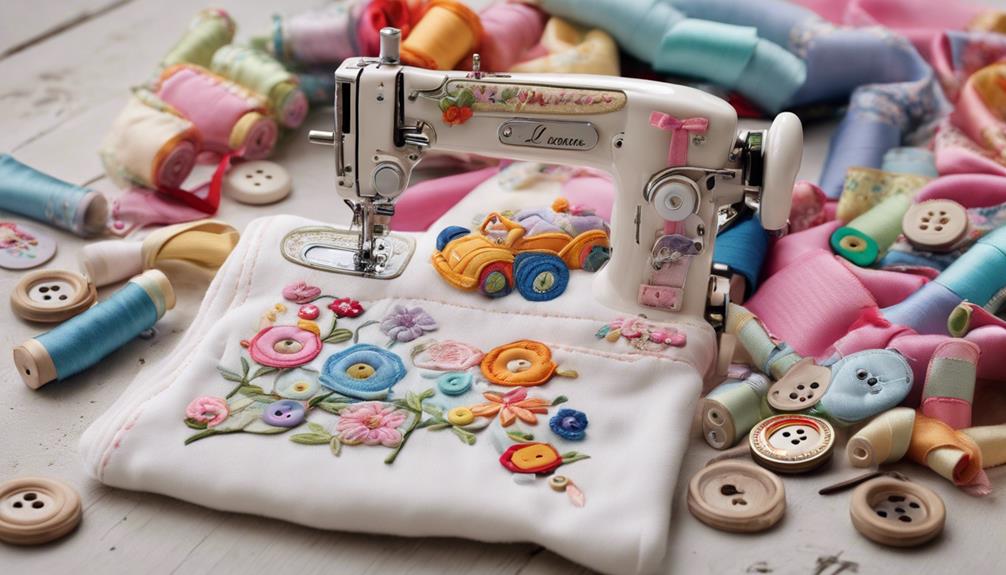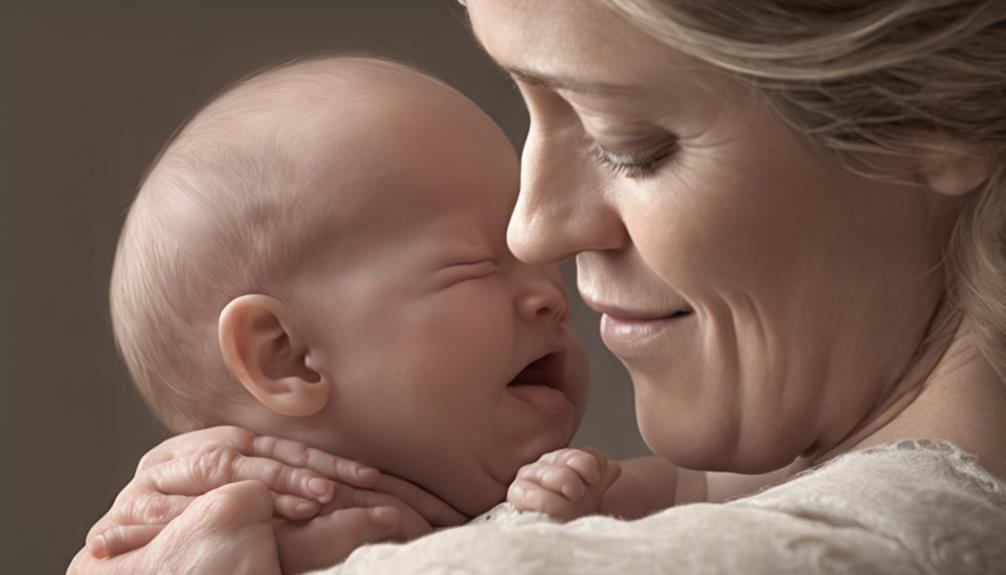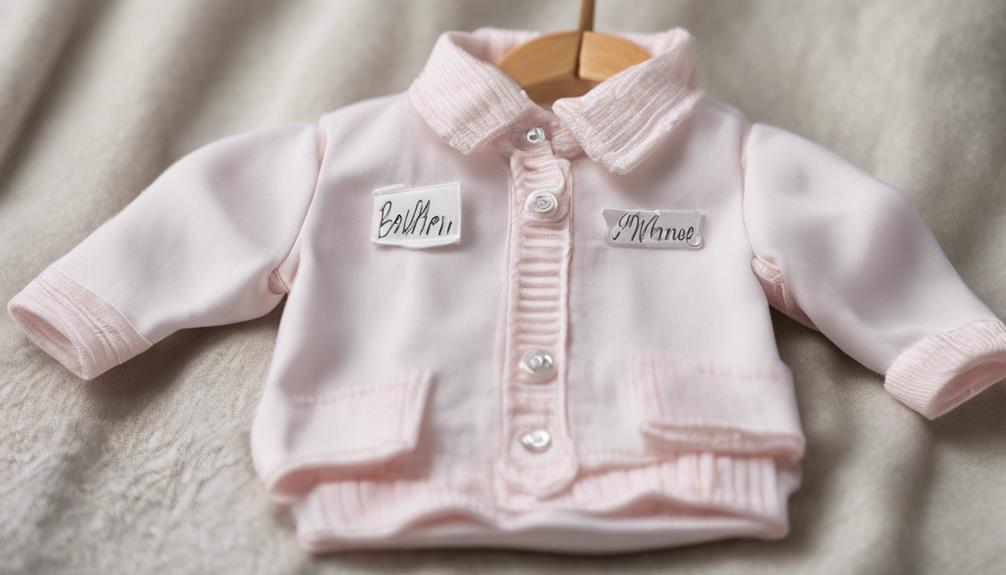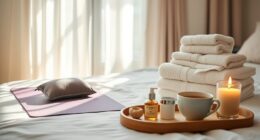Crafting personalized baby clothes at home may seem intimidating, requiring advanced sewing skills. However, rest assured, it’s actually much simpler than you might think.
With a few basic tools and materials, you can easily craft unique pieces for your little one that stand out from store-bought items.
But before you jump into the world of DIY baby clothing, let's explore some key steps that will help you unlock your creativity and make adorable garments that your baby will love.
Key Takeaways
- Choose soft, breathable fabrics like organic cotton for comfort and safety.
- Tailor patterns to individual sizes for well-fitted garments that reflect your baby's style.
- Take precise measurements and use proper cutting and sewing techniques for accurate sizing.
- Personalize baby clothes with unique designs, embroidery, or embellishments for a special touch.
Choosing the Right Fabric
When starting on your journey to create custom baby clothes at home, the first essential step is selecting the perfect fabric that will provide ultimate softness and comfort for your little one's delicate skin. Opt for fabrics like organic cotton, bamboo, or modal to assure a gentle touch against your baby's skin. These materials aren't only soft but also breathable, making them ideal for sensitive skin. Consider fabric blends with spandex for added stretchiness, allowing your baby to move around comfortably.
Look for fabrics with Oeko-Tex certification to guarantee that they're free from any harmful substances, giving you peace of mind. Choose colors and prints that aren't only baby-friendly but also easy to care for. Prioritize durability and washability in your fabric selection to make sure that the custom baby clothes you create can withstand frequent wear and cleaning. By selecting the right fabrics, you're laying the foundation for cozy, safe, and stylish clothing for your little one.
Creating Custom Patterns
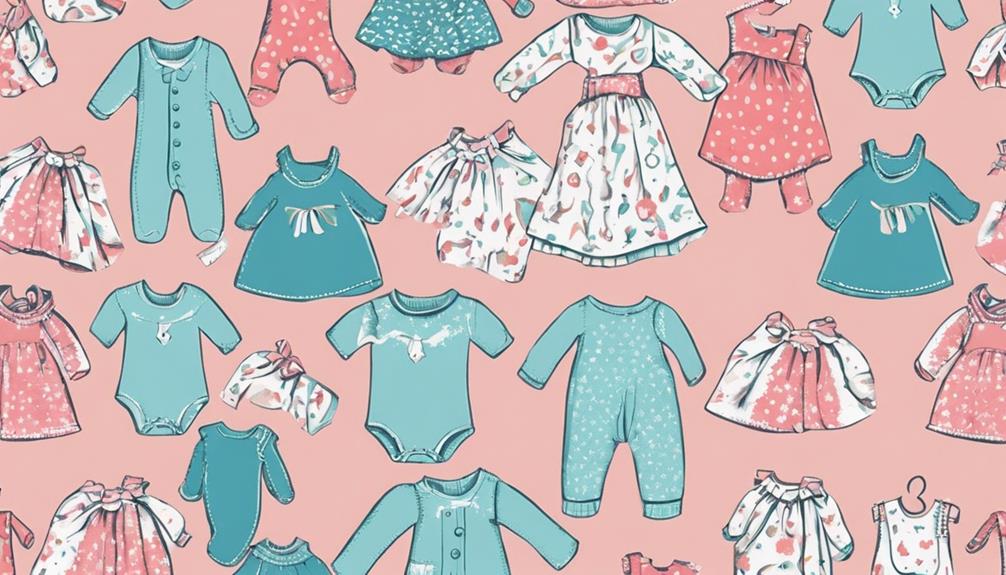
To reveal the full potential of your custom baby clothing creations, explore into the art of crafting personalized patterns that cater to your little one's unique style and comfort needs. Making custom patterns for baby clothes is a rewarding process that allows you to tailor each piece to perfection.
Here are some tips to help you get started:
- Take Precise Measurements: Before you begin creating your custom patterns, guarantee you have precise measurements of your baby. This will guarantee a perfect fit and ultimate comfort.
- Use Tailoring Techniques: Tailoring patterns to individual sizes is key to achieving a well-fitted garment. Adjust the patterns according to your baby's specific measurements for a personalized touch.
- Create Templates: Develop templates for different types of clothing such as onesies, leggings, or dresses. Having templates on hand will make the pattern-making process more efficient.
- Design Unique Patterns: Let your creativity shine by designing unique patterns that reflect your baby's style. Experiment with different designs to craft one-of-a-kind baby clothes that stand out.
Taking Accurate Measurements
For precise and personalized custom baby clothes, mastering the art of taking accurate measurements is essential. When measuring your little one for custom outfits, grab a flexible measuring tape to guarantee you get those numbers just right. Remember, babies grow fast, so consider potential growth spurts and leave some room for movement in the clothing you create.
Measure their chest, waist, hips, and inseam for accurate sizing that will last through their growth stages. Don't forget the details like arm length, leg length, and neck circumference to tailor the clothes perfectly to your baby's shape. Before cutting into that adorable fabric you've chosen, double-check all your measurements to avoid any mishaps and guarantee a flawless fit for your custom baby clothes.
Taking the time to measure accurately now will result in beautifully crafted outfits that your little one will love to wear.
Cutting and Sewing Techniques
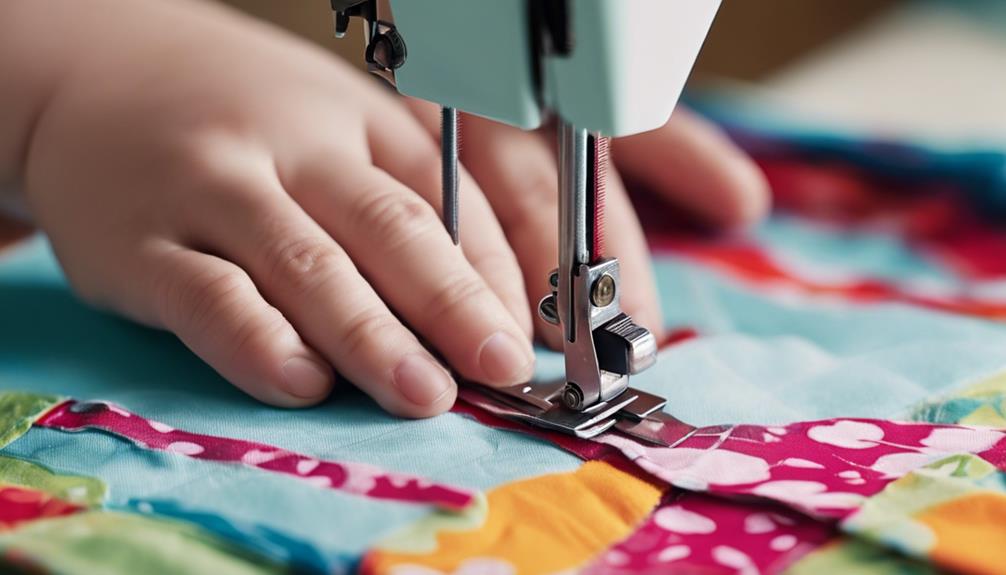
Now that you have mastered the art of taking accurate measurements for your custom baby clothes, let's plunge into the world of cutting and sewing techniques to bring your creations to life with precision and style.
- Sharp Fabric Scissors: Invest in a good pair of fabric scissors to guarantee precise cutting and prevent fraying edges, giving your baby clothes a clean and professional look.
- Sewing Machine: Utilize a sewing machine with appropriate settings to create secure and neat seams, enhancing the durability and comfort of the final garment.
- Seam Allowances: Pay attention to proper seam allowances when cutting and sewing to assure a comfortable fit for your little one while also improving the longevity of the custom baby clothes.
- Backstitch and Pressing Techniques: Remember to backstitch at the beginning and end of seams for added strength, and practice pressing techniques with an iron to achieve crisp edges and a polished, professional finish in your homemade baby apparel.
Adding Personalized Touches
Enhance your custom baby clothes with personalized touches that reflect your unique style and creativity. Adding monograms, custom designs, or names to the clothing can make them truly one-of-a-kind. Consider incorporating unique embroidery, appliques, or patches to add depth and texture to your creations. Using special fabrics and colors can elevate the overall look and feel of the garment, making it stand out. Don't shy away from embellishments like beads, sequins, or ribbons to add a touch of charm.
| Personalized Touches | Description |
|---|---|
| Embroidery | Adds intricate designs to the fabric. |
| Hand-Painting | Allows for artistic and personalized motifs. |
| Hand-Stitching | Adds a handmade and unique touch. |
Frequently Asked Questions
How Do You Print on a Baby Onesie?
To print on a baby onesie, you cut out a custom design from heat transfer vinyl (HTV), mirror it, then apply with a heat press or iron. Follow cut settings, press with heat and pressure, and voilà, a personalized onesie just for your little one!
How Do You Make a Tshirt Into a Baby Onesie?
To turn a t-shirt into a baby onesie, measure and cut based on size, sew leg holes and body, then add snaps for easy diaper changes. Transforming a tee into a cute onesie is a fun DIY project!
How Do You Iron on an Onesie With Cricut?
To iron on an onesie with Cricut, preheat your Easy Press. Place the onesie flat, position your design with the carrier sheet up, and press firmly for the specified time. Peel off the carrier sheet to reveal your custom design.
How to Make Things Out of Baby Clothes?
Repurpose old baby clothes creatively. Craft sentimental keepsakes, practical items, trendy fashion pieces, and decorative items. Combine memories with utility for a unique style. Transform baby clothes into treasures that bring joy and function to your daily life.
Conclusion
Now that you've mastered the art of creating custom baby clothes at home, remember: 'The devil is in the details.' Pay attention to the little things, from choosing the right fabric to adding personalized touches, to truly make your creations stand out.
With a little creativity and effort, you can guarantee that your baby's wardrobe is as unique and special as they are. Keep up the good work and enjoy the process of making something truly one-of-a-kind!
